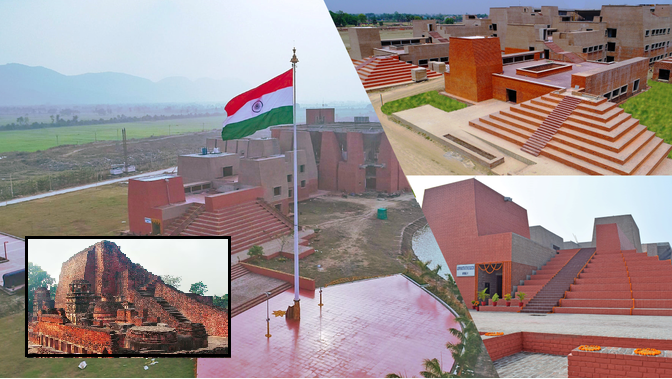
- India under the leadership of Prime Minister Narendra Modi has revived yet another gem of the past.
- Nalanda University was an integral part of the civilization of Bharat, and the 19th of June marked its revival after 815 long years.
- The crown jewel of the university was its 9-storey library called ‘Dharm Goonj’ which was home to 9 million manuscripts that had vast knowledge of religion, science, and medicine.
India under the leadership of Prime Minister Narendra Modi has revived yet another gem of the past. Nalanda University was an integral part of the civilization of Bharat, and the 19th of June marked its revival after 815 long years. After almost 8 centuries, it was the year 2014 when the construction of the university began which finally is completed now and was Inaugurated by the PM on June 19.
The inauguration ceremony saw the presence of Bihar’s CM Nitish Kumar, and India’s foreign minister Dr S Jayashankar among a few other ministers and dignitaries. Ambassadors of 17 different countries were also present making it a global event. India intends to bring back its lost glory of being the knowledge capital of the world through the Nalanda Brand which is popular among historians around the world.
An Architectural Marvel
Speaking about the architecture of the university, India has managed to showcase its ancient architectural engineering while setting an example of sustainable engineering and promoting its vision towards climate change. Looking into some numbers, the campus is built in a massive area of 455 acres. The campus includes 2 academic blocks with 40 classrooms that have a total capacity of 1900 students. The campus has 2 auditoriums and an international centre with a seating capacity of 2000, there are other Amenities like faculty centres and a sports Complex. The university is a Net zero model.
History
Nalanda was built in the year 427 by emperor Kumara Gupta, Nalanda had about 1600 teachers who were scholars of phylogeny, economics, astronomy, science, mathematics and medicine. The university was the world’s first residential university that had about 10,000 students which included people from Tibet, China, Europe, the Middle East and the Indian subcontinent. The crown jewel of the university was its 9-storey library called ‘Dharm goonj was home to 9 million manuscripts that had vast knowledge of religion, science and medicine. The campus also had over 300 rooms and 7 halls.
One could only imagine the role of Nalanda in shaping mankind but, the great structure had a tragic end when the commander of the Delhi sultanate, Mohammad Bin Bhaktiyar Khilji destroyed the region and burnt the library to ashes in the year 1193. The revival of Nalanda only came into the limelight when former president Dr A P J Abdul Kalam proposed to bring Nalanda back to life. It was the vision of the ‘Missile Man of India’ that we have got a chance to witness this historic moment.
Challenges to the Indian Education System
Although India has brought significant changes in the education system in the last decade, there is unfortunately a lot to complain about. Due to India’s massive population of youth who aspire to find the perfect jobs for themselves, it becomes very important for the government to make sure that the systems are running efficiently but, that has become the biggest problem as Paper leaks have become a regular custom throughout the nation which is alarming for the nation’s reputation. The syllabus and Curriculum have been a problem for decades as it is outdated and has failed to produce industry-ready job seekers.
The National Education Policy 2020 hasn’t made a noticeable difference yet. Spending has been a major concern for the government, 1.6 lakh crore Indian Rupees was allocated from the budget for education out of which only 1.08 lakh crore Indian rupees were spent in the previous financial year. Under NEP 2020’s vision, the government plans to spend 6% of its total budget on education which currently stands at 3% so there is a long way to go.
The Indian dream is one to watch out for and it is nothing less than ambitious but with great ambitions comes a great demand for commitment and an even greater demand for execution.
